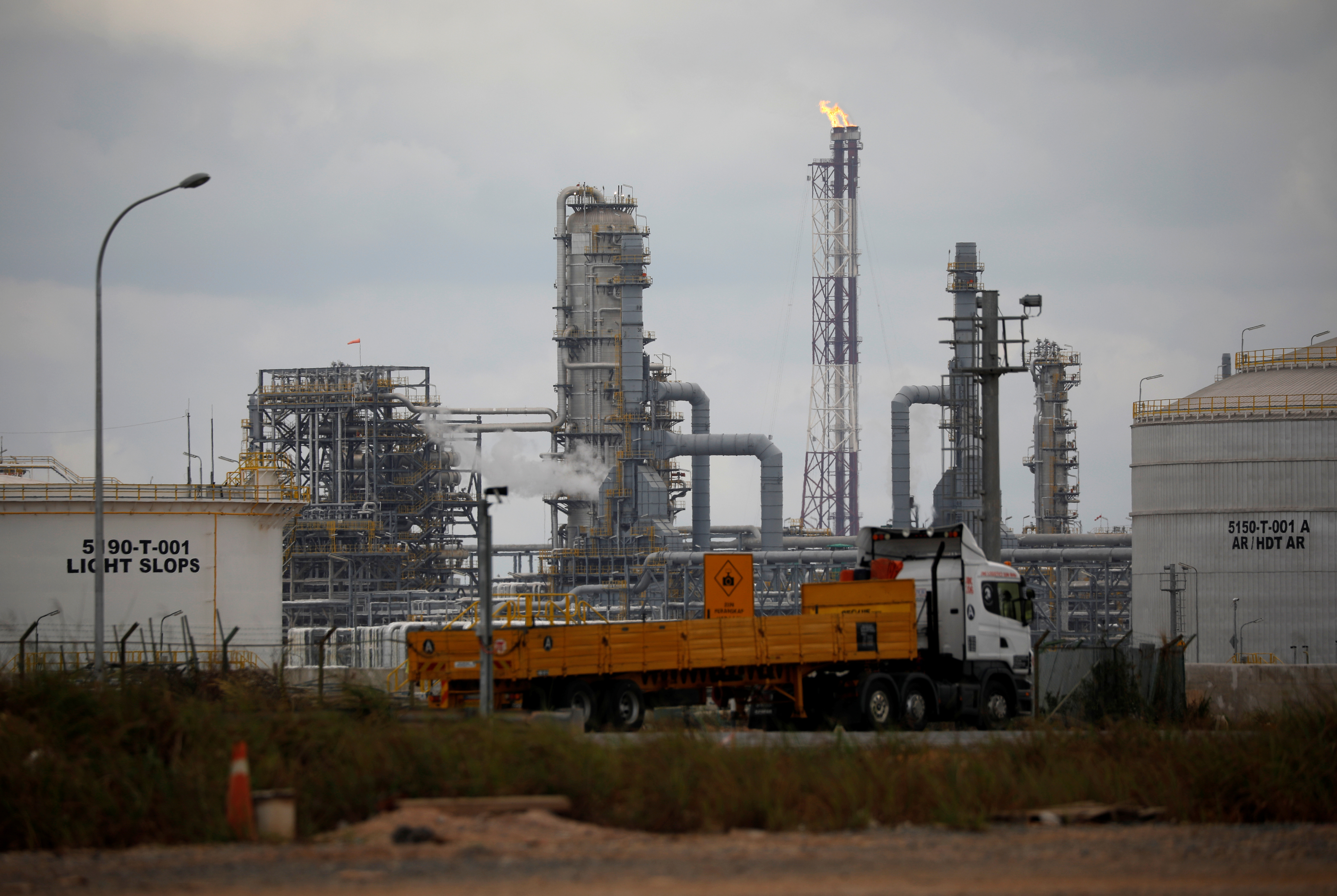
LAUNCESTON, Australia, April 18 (Reuters) – There is an increasing disconnect between the forecasts for strong global oil demand growth this year, led by Asia, and the reality of weakening margins for refined fuels.
The profit from turning a barrel of Dubai crude into refined products at a typical Singapore refinery dropped to $2.53 a barrel on Monday.
This was the lowest since Oct. 27 and down 82% from the peak so far in 2023 of $14.33 a barrel on Jan. 25. It is also about a quarter of the moving 365-day average of $10.34 a barrel.
The slide in refinery margins comes as OPEC+ producers act to further cut crude supply, a move seen as aimed at asserting the group’s influence in the global market as well as boosting oil prices.
The drop in refinery profits is being led by a contracting margin for gasoil, the base for diesel and jet fuel, with 10 ppm gasoil margin dropping for a seventh session on Monday.
The margin declined to $14.25 a barrel on Monday, the lowest since January 2022 and down 63% from the peak so far in 2023 of $38.89 on Jan. 25.
Given diesel is mainly used as a heavy vehicle transport and industrial fuel, falling margins indicate that sectors such as construction and manufacturing may be starting to come under pressure.
It is not just gasoil that is being affected, with the margin on gasoline also dropping.
The profit from turning a barrel of Brent crude into the light motor transport fuel in Singapore slid to $12.03 on Monday, the weakest since March 7 and down 38% from the peak so far in 2023 of $19.32 on March 30.
The falling margins on refined fuels may result in refiners in Asia processing less, especially as crude costs continue to rise.
The April 2 announcement by OPEC+, the group consisting of the Organization of the Petroleum Exporting Countries and allies including Russia, that they would cut a further 1.16 million barrels per day (bpd) of output from May has boosted oil prices.
Global benchmark Brent futures ended at $84.76 a barrel on Monday, having held onto the gains of about $5 a barrel made in the wake of the OPEC+ production decision.

CRUDE COSTS
The cost of some physical crude for Asian refiners has also risen after top exporter Saudi Arabia hiked its official selling prices (OSPs) for May-loading cargoes for a third straight month.
The OSP for the kingdom’s benchmark Arab Light blend was raised to a premium of $2.80 a barrel over the Oman/Dubai, up 30 cents from April-loading cargoes.
Saudi Arabia’s pricing moves tend to be followed by other major Middle East exporters, thereby affecting the bulk of seaborne crude shipped to Asian customers.
The question for the crude market is whether Asia’s refiners will start to cut throughput in response to the higher crude price and weaker margins on refined products.
It is likely that they will first try to buy cheaper oil from non-OPEC producers such as the U.S., as well as seeking discounted Russian oil that can no longer be sold to Europe.
But if margins continue to come under pressure, refiners are likely to lower output in a bid to drive product prices higher.
The problem is that with the global economy starting to look weak outside of China, higher fuel prices may exacerbate the slowdown and raise recession risks.
Despite the current problems facing refiners, both OPEC and the International Energy Agency (IEA) are sticking to bullish forecasts for crude demand growth in 2023.
However, these are now largely centred on strong demand in the second half of 2023, led by China, with the IEA predicting global oil demand will rise an overall 2 million bpd in 2023.
The IEA does acknowledge the risk to economic growth from rising fuel prices amid an anticipated shortfall in crude supply in the second half of the year.
But it seems the agency is expecting, or perhaps hoping, that supply constraints may be eased rather than demand being destroyed by a weakening global economy.
OPEC is also maintaining a bullish view for 2023 oil demand growth, keeping its forecast for an increase of 2.32 million bpd in its latest monthly report.
But the group also highlighted downside risk to oil demand in the northern summer as a result of weakness in developed economies, which are still battling high inflation and the impact of tighter monetary policy.
The main risk to the IEA and OPEC forecasts would appear to be what impact the relatively high price of crude will have on the forecast surge in demand in the second half of 2023.
If OPEC+ is successful at keeping crude prices above $80 a barrel, it should serve to undermine the bullish growth forecasts as more and more economies experience slowing growth and tip toward recession.
The opinions expressed here are those of the author, a columnist for Reuters.
Share This:




 CDN NEWS |
CDN NEWS |  US NEWS
US NEWS 




























China’s Transition Hampered by Flat-Lining Energy Intensity